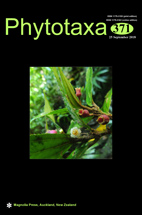Abstract
Two new hybrids of Origanum, O. ×malyeri and O. ×sevcaniae, are described and illustrated in detail. The general morphology, pollen and chromosome features, and nuclear (ITS) and chloroplast (rpl32) genomes of collected specimens were studied. Origanum ×malyeri is a hybrid between O. boissieri and O. vulgare subsp. hirtum and O. ×sevcaniae is another hybrid between O. vulgare subsp. hirtum and O. vogelii. These two new hybrids have some morphological intermediate characters between their parents. The pollen morphology of O. ×sevcaniae and its parents were studied and documented in detail using light microscopy (LM) and scanning electron microscopy (SEM). O. ×sevcaniae pollen is small to medium (P=18.49–21.03 µm, E=22.20–26.63 µm), suboblate (73%) to oblate (22%), the range of P/E ratio is from 0.73 to 0.85. Pollen grains are hexacolpate with granular membranes. Pollen grains were identified as bireticulate exine ornamentation with scanning electron microscopy examinations. The somatic chromosome number of O. boissieri, O. vulgare subsp. hirtum, O. vogelii, and O. ×sevcaniae were counted as 2n = 30. Pollen characters and somatic chromosome numbers of O. ×malyeri could not be examined because it has only female flowers and has not any nutlets. Also, according to molecular results, O. ×malyeri and O. ×sevcaniae have some polymorphic nucleotide regions in their nuclear ITS genomes and which means they have two different DNA dataset belonging to their parents. Also, some individuals of O. ×sevcaniae parents have single nucleotide polymorphism, too. These individuals live together with their hybrids and hybridization is probably a continuing process in that hybrid swarms. These present results support previous reports for the speciation of Origanum members via hybridization.

